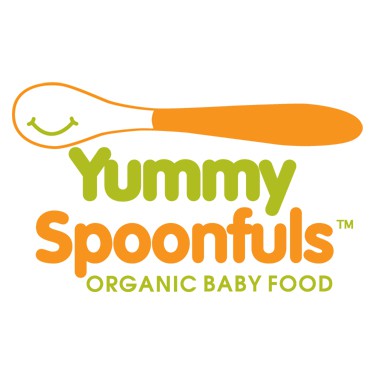3 month baby feeding guide
3-Month-Old Baby Guide—Third Month Development & Milestones
Their personality is growing, and so are their muscles
A bigger personality and a stronger body are the standout developments of 3-month-old. It’s an exciting time to be a parent, with much to discover for you both!
MILESTONE CONTENT:
Feeding schedule: At 3 months of age, your baby will likely be drinking 6- to-7 fl oz of formula or breastmilk, 4-5 times a day.
They can see clearly now: All babies are born with fuzzy vision—seeing clearly for, at best, 12 inches from their face. By month 3, yours should see well enough to watch and track you from several feet to all the way across the room!
Baby steps of strength.
By month 3, your little one is developing their own personality. They’re also developing some strength and coordination, perhaps reaching for objects and turning their head in the direction of your voice. This makes it a fun time to get them involved with new toys, textures, and people. They’re working on strengthening their hand muscles to prepare for picking up toys in a few more months from now. Help them grow stronger by putting a rattle in their hand and playing a gentle game of tug-of-war.
Your baby’s nutrition: food for thought
Your little one’s taste in food may be simple, but the science of good nutrition goes a bit deeper.
Your baby’s overall development, including that of their immune system and brain, depends on appropriate amounts of macronutrients (carbohydrates, lipids, and protein) and micronutrients (vitamins and minerals). These nutrients help provide cell membrane structure, regulate metabolism, and supply energy.
Here's a brief description of how micro- and macronutrients feed your baby’s growth and development:
CARBOHYDRATES supply food energy for growth, body functions, and activity. They also allow protein and lipids to be used efficiently and normally.
LIPIDS provide more than twice the energy of carbohydrates or protein to power growth and functionality. Lipids are made up of fatty acids. Linoleic acid and alpha-linolenic acid are considered essential fatty acids because they are not made by the body and must be obtained by food. These fatty acids are converted to arachidonic acid (ARA) and docosahexaenoic acid (DHA), both of which are important for brain and eye development.
PROTEINS help develop, maintain, and repair new tissues throughout the body, including in the brain.
VITAMIN E is an antioxidant found in cells, including cells in a baby’s developing eyes and brain. Vitamin E helps protect these cells. It’s also essential for structure and function of the nervous system, retinas, and skeletal muscles. Common food sources of vitamin E include:
- Oil-containing grains
- Fortified cereals
- Vegetable oils
- Plants and vegetables
Your baby’s development: it’s beyond compare
It’s natural to compare your baby’s development with other babies, but babies develop at their own pace, so you shouldn’t worry if yours does something sooner or later than your friend's baby. In general, by the end of their third month, these are some developments you can start looking for:
In general, by the end of their third month, these are some developments you can start looking for:
- The ability to hold their head up steadily
- "Coo" and "goo" noises, as well as other sounds
- Interest in reaching for familiar objects
- Focuses on closely held objects and follows them from side to side
Help your 3-month-old engage with their world
It’s not always easy to see it, but your 3-month-old is becoming quite aware of their surroundings. Here’s how you can help:
Prop them up. Give your baby a better seat by propping them up to watch what is going on around them.
Look in mirrors. Place an unbreakable baby mirror in their crib or playpen. Hold them up to mirrors in your home.
Soft rock. A rocking chair or porch swing is a great place to hold your baby as you talk softly and make eye contact.
Quiet times. Your baby needs some quiet time to babble, play, and explore their world, so turn off the radio, TV, or stereo.
Textures to touch. Your baby will like feeling the various textures of items like stuffed animals, plastic toys, or pieces of terry cloth or rubber (be sure pieces are not too small and that they cannot be torn off and swallowed).
Sing quietly. A quiet song from mom or dad before bed could leave your baby starry eyed.
Things to think about at 3 months: sleep patterns
Some tips and things to know about your baby’s sleep patterns include:
- Your baby might be sleeping about 12 to 15 hours total every day, including naps.
- If they roll over and wake up, wait a few minutes to see if they go back to sleep without your help.
- Keep thick blankets, comforters, pillows, and stuffed toys out of the crib.
Learn about infant sleep safety recommendations from the American Academy of Pediatrics.
Next month’s developments: yakety yak, your baby is talking back!
Month 4 may bring some laughter and attempts at basic speech.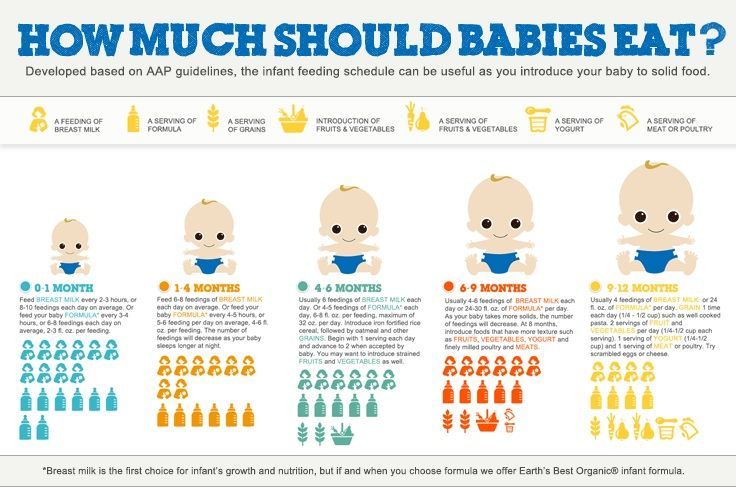 It’s also time to learn how you can start strengthening their immune system. Read ahead to learn more about what happens in Month 4.
It’s also time to learn how you can start strengthening their immune system. Read ahead to learn more about what happens in Month 4.
Join Similac® Rewards for up to $400* in benefits and support throughout your journey.
* Offers may vary.
Sign Up
3- and 4-month-old feeding schedules
- Community
- Getting Pregnant
- Pregnancy
- Baby Names
- Baby
- Toddler
- Child
- Health
- Family
- Courses
- Registry Builder
- Baby Products
Advertisement
At 3 and 4 months old, babies are still eating frequently throughout the day but are capable of going for longer stretches at night. Breastfeeding parents can expect their baby to continue to eat often, anywhere from eight to 12 times a day.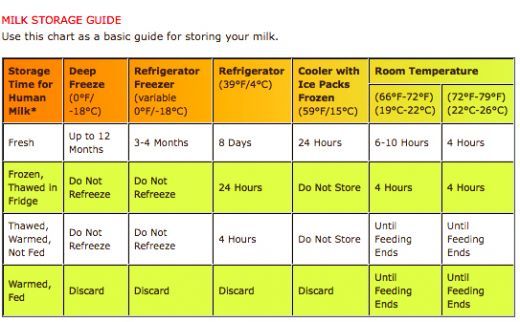 If you're formula-feeding your little one, they'll be ready for 4- to 6-ounces bottles six to eight times a day. As your baby grows out of the newborn stage, you may notice them starting to develop a more predictable schedule for feeding, sleep, and play.
If you're formula-feeding your little one, they'll be ready for 4- to 6-ounces bottles six to eight times a day. As your baby grows out of the newborn stage, you may notice them starting to develop a more predictable schedule for feeding, sleep, and play.
Photo credit: iStock.com / Hiraman
At 3 and 4 months old, your baby may be naturally falling into a schedule. You can encourage them by adding more consistency to their days. Keep their naptimes, mealtimes, and bedtime routine about the same from day to day. Babies are awake and alert more now, making it a good time to start getting them on a more predictable schedule.
It can be a big help to see what other moms and dads are doing. Below, you'll find several sample schedules based on those of real parents and reviewed by a pediatrician on our Medical Advisory Board.
As you're creating a schedule for your baby, here are a few things to keep in mind:
- The schedule for a formula-fed baby may look different than the schedule for a breastfed baby.
 At 3 to 4 months old, your formula-fed baby will have around 32 ounces of formula each day over five to eight feedings of 4 to 6 ounces each. (See whether your baby is getting enough formula.)
At 3 to 4 months old, your formula-fed baby will have around 32 ounces of formula each day over five to eight feedings of 4 to 6 ounces each. (See whether your baby is getting enough formula.) - If you're breastfeeding, your baby will eat five to eight times a day, every two or three hours. (Here's how to tell whether your baby is getting enough breast milk.)
- By focusing on longer feedings every three to four hours during the day, you can start encouraging your baby to sleep for longer stretches at night. Babies can go through the night without a feeding as early as 3 months, but it more commonly happens later, around 5 or 6 months
Sample 3-month-old feeding schedule
7 a.m.: Nurse.
8 a.m.: Daycare drop off; playtime.
9:45 a.m.: 4 ounces of expressed breast milk.
10 a.m.: Naptime. (Mom pumps at work.)
12 p.m.: Playtime.
Advertisement | page continues below
12:45 p. m.: 4 ounces of expressed breast milk.
m.: 4 ounces of expressed breast milk.
1:30 p.m.: Naptime. (Mom pumps again.)
2:30 p.m.: Playtime.
4 p.m.: 4 ounces of expressed breast milk. (Mom pumps again.)
4:30 p.m.: Naptime.
5:15 p.m.: Daycare pickup.
5:45 p.m.: Playtime.
6:30 p.m.: Nurse.
6:45 p.m.: Playtime and tummy time.
7:30 p.m.: Nurse, then bedtime routine.
12 a.m.: Nurse.
4 a.m.: Nurse.
Sample 4-month-old feeding schedule
5 a.m.: Nurse, then back to sleep.
7 a.m.: Nurse and back to sleep again.
9 a.m.: Wake up.
10 a.m.: Nurse, then tummy time and playtime.
12 p.m.: Naptime.
2 p.m.: Nurse.
2:30 p.m.: A walk in the stroller.
3 p.m.: Short nap.
4 p.m.: Nurse.
5 p.m.: Playtime.
7 p.m.: Bedtime routine – bath, read a few books and sing a lullaby.
7:30 p.m.: Nurse and bedtime.
1 a.m.: Nurse, then back to bed.
Tips for feeding your 3- or 4-month-old
You may be breastfeeding exclusively, pumping and breastfeeding, exclusively pumping, formula-feeding, or supplementing with formula. No matter how you're feeding your 3- to 4-month-old baby, here are some tips for helping it go smoothly.
- If you're breastfeeding, continue to nurse or pump often to keep your milk supply up. Offer both breasts at each feeding to keep signaling to your body that it needs to make enough milk to keep up with your baby's hunger.
- It's hard to overfeed a breastfeeding baby, but at 3 to 4 months it's also okay to encourage them to go for slightly longer stretches between meals.
 By focusing on longer feedings, you can fill their belly and try to avoid your baby "snacking" all day long.
By focusing on longer feedings, you can fill their belly and try to avoid your baby "snacking" all day long. - Eat plenty of nutritious foods to keep yourself fueled for feeding your baby. Breastfeeding moms need more calories (450 to 500 extra calories each day), and dieting can decrease your milk supply.
- If your baby is nursing exclusively but you're ready to introduce a bottle, it can sometimes be a challenge. Here are some tips for giving your breastfed baby a bottle.
- If you're exclusively pumping and you notice a sudden drop in milk supply, try power pumping. The idea is to pump frequently over an hour to increase supply. One commonly suggested power pumping schedule is pump for 20 minutes, rest for 10 minutes, pump for 10 minutes, rest for 10 minutes, pump for 10 minutes. You can power pump once or twice a day.
- Practice paced bottle feeding if your baby is drinking formula or breast milk from a bottle. By feeding your baby in a more upright position and taking regular breaks to burp them, you allow them more control over how quickly and how much milk or formula they drink.

- Keep your bottle-fed baby safe from foodborne illness by practicing safe bottle feeding. Wash your bottles thoroughly between feedings and be sure you're storing formula safely. Expired or compromised formula can be dangerous for babies, so double-check the label before feeding your baby from a new container of formula.
Learn more:
- Your 3-month-old baby's growth and development
- Your 4-month-old baby's growth and development
- 3-month-old sleep guide
- 4-month-old sleep guide
- When can my baby start sleeping through the night?
Was this article helpful?
Yes
No
Mary Sauer
Mary Sauer is a freelance parenting and health writer living in Kansas City. She is a mom of four and loves to hike with her kids, read, and knit. Cooking a complicated meal her kids probably won't eat is one of her favorite pastimes.
Advertisement
Breastfeeding on demand
You can often hear from a nursing mother: "I feed on demand, my baby requires a breast every 3.
5 hours." Or: “I have always fed on demand. In a year, we already had 1 feeding in the evening, and my child calmly refused to breastfeed. Before talking about the demand of the child, it is necessary to find out what modern women mean when they say - "I breastfeed."
Modern mothers consider breastfeeding necessary for feeding their baby. Just for feeding. Breast milk is food, the mother supplies the baby with the nutrients necessary for growth and development. When a baby suckles at the breast, he eats. Breastfeeding makes sense only as a process of supplying proteins, fats, carbohydrates, vitamins and microelements.
During suckling, the baby receives the nutrients it needs with mother's milk. This is the absolute truth. There is another unconditional truth, which is not given any importance in modern society, it is not taken into account and is not considered. Breastfeeding for a child is communication with the mother. We need to figure out how the child understands feeding on demand? Can he understand anything at all? Is there any difference for him how he is fed, for 15-20 minutes after 3. 5 hours or in some other way?
5 hours or in some other way?
What is on-demand feeding
On-demand feeding of a newborn baby means putting it to the breast for every squeak or search. Squeak and search movements in newborns, even as early as the second or third day of life, begin to appear much more often than after 3.5 or 2.5 hours. The need for attachments increases rapidly, and by the 10-12th day of life, the need to attach to a child may occur 15-16 or more times a day. Applications vary in duration. The baby can fall asleep and sleep while sucking for, for example, 1.5-2 hours. Can release the breast after 1-2 minutes. And then ask her again. Why does a child need such frequent contact with his mother's breast?
That's why. Being in the mother's belly, in a calm, familiar environment, listening to the noises of the mother's body, being in a warm, cramped, confined space, the baby sucked his fist, fingers, loops of the umbilical cord, swallowed amniotic fluid. Learned to suck and swallow. After birth, experiencing discomfort for any, the most insignificant reason, the baby tries to get rid of it. You can get rid of discomfort by getting into the usual conditions of a comfortable stay. The only place where the baby after birth can feel the sensations familiar to him is in the arms of the mother. The only familiar action is sucking. The only familiar taste and smell is the taste and smell of milk and lube in the areola. Milk and lubricant have an odor and taste similar to the taste and smell of amniotic fluid. Therefore, experiencing discomfort, the baby squeaks, or begins to look for an object to suck with his mouth. Ideally, it is immediately applied to the chest. The baby becomes warm, cramped, he hears the beating of his mother's heart, breathing, grumbling in the intestines, he sucks and feels the familiar taste and smell. If such an action happens constantly, the baby gains confidence, no matter what happens, he will solve all his problems with his mother. The place of comfort is now under the breast, and you can suck on the breast.
After birth, experiencing discomfort for any, the most insignificant reason, the baby tries to get rid of it. You can get rid of discomfort by getting into the usual conditions of a comfortable stay. The only place where the baby after birth can feel the sensations familiar to him is in the arms of the mother. The only familiar action is sucking. The only familiar taste and smell is the taste and smell of milk and lube in the areola. Milk and lubricant have an odor and taste similar to the taste and smell of amniotic fluid. Therefore, experiencing discomfort, the baby squeaks, or begins to look for an object to suck with his mouth. Ideally, it is immediately applied to the chest. The baby becomes warm, cramped, he hears the beating of his mother's heart, breathing, grumbling in the intestines, he sucks and feels the familiar taste and smell. If such an action happens constantly, the baby gains confidence, no matter what happens, he will solve all his problems with his mother. The place of comfort is now under the breast, and you can suck on the breast.![]()
This whole process is biologically justified. A newborn child does not feel the feeling of hunger, this feeling is not formed in him. It will begin to form at about two months of age. How to feed a creature that does not experience hunger ?! How to encourage him to take some action to get food? This can be done only at the expense of some other incentives. This stimulus for the newborn is constant bodily discomfort, thanks to which he wants to suckle all the time! The most intense, frequent and prolonged sucking in infants is observed in the first two or three months of life. It is in these first months that the main weight gain of the baby occurs.
Feeding in the first month
Baby falls asleep with breast in mouth, sleeps sucking for a while. Falling asleep deeply, lets go of the chest. After sleeping for a while, he wakes up, and is applied on waking. After sleep, he can stay awake for some time, for example, an hour and a half. During wakefulness, he may feel discomfort 2-3 times, for example, from a completely natural desire to pee, and having called his mother for help, having kissed for a couple of minutes, he will do his deeds. Then he will want to sleep, feel discomfort and, kissing his chest, will again fall asleep sucking. After some time, he will wake up and attach again. Then again a little "walk". And after some time, he will fall asleep at the chest again.
Then he will want to sleep, feel discomfort and, kissing his chest, will again fall asleep sucking. After some time, he will wake up and attach again. Then again a little "walk". And after some time, he will fall asleep at the chest again.
The daytime naps of a one-month-old infant feeding on demand vary in duration and number. There can be 4-6 dreams during the day, and they can last from 5-15 minutes to 2-2.5 sometimes 3 hours. "Around" each dream, the baby is applied to the chest, and applied between dreams several times. At night, the child falls asleep at the breast. Usually in the early morning hours, he begins to fuss and apply. In the morning, he almost never fully wakes up. The baby sleeps, from time to time, sucking on his mother's breast. Waking up in the morning, the baby is again applied to the chest. If you count all the attachments that have happened in a baby of one month of age, then approximately 16-20 attachments are obtained. This is how a newborn human cub behaves if it is given the opportunity to behave in accordance with physiological and psychological needs, which, by the way, are genetically determined. The child of the first months of life does not separate his personality from the personality of the mother and from her breast. Mom and her breasts, and everything connected with them, are the universe of the baby and himself.
The child of the first months of life does not separate his personality from the personality of the mother and from her breast. Mom and her breasts, and everything connected with them, are the universe of the baby and himself.
In most cases, a modern woman, being afraid to “accustom a child to hands”, strives to limit his requests for sucking. A pacifier and a bottle of tea or water come to her aid in this matter. They, too, can be sucked ... The need for sucking seems to be satisfied. But only the need for communication with the mother during suckling is not satisfied, the peculiar chain of mutual assistance and cooperation between mother and baby is destroyed, the formation of maternal affection and concentration is disrupted. Is the difference in the two actions noticeable to the reader: the baby cried, the mother took him, put him to her chest and started rocking him, or gave him a pacifier and started rocking the stroller, even with the words “Why are you crying, my sun?”
The modern woman who gives a pacifier and pumps a stroller is not a bad person deliberately harming an infant. She is simply in captivity of prejudices regarding the relationship between mother and baby. She does not know how to behave correctly, does not know what to do in accordance with the natural needs of the child. If you tell her what the child really needs, she will exclaim in horror: “What is it, don’t let him get away with?!” Indeed, the child of the first months of life must not be let off the hook. For a woman who does not know how to comfortably carry a baby, and who does not know how to feed him in various positions (sitting, lying, standing and even moving), this can be very difficult. Especially if she is not sure of the correctness of her actions.
She is simply in captivity of prejudices regarding the relationship between mother and baby. She does not know how to behave correctly, does not know what to do in accordance with the natural needs of the child. If you tell her what the child really needs, she will exclaim in horror: “What is it, don’t let him get away with?!” Indeed, the child of the first months of life must not be let off the hook. For a woman who does not know how to comfortably carry a baby, and who does not know how to feed him in various positions (sitting, lying, standing and even moving), this can be very difficult. Especially if she is not sure of the correctness of her actions.
An action that should become automatic for the mother of a newborn: when the baby cries or shows other signs of anxiety, put the baby to the breast.
What's next?
The baby is growing. A fairly stable rhythm of daytime sleep begins to form in him, and a 3-4-month-old baby behaves quite differently from a newborn. Feeding on demand at this age looks something like this...
Feeding on demand at this age looks something like this...
- At three months, the baby has 10-12 feeds during the day and 2-4 at night. There are frequent applications for a short time, but their number is reduced. There may be a long night break in feedings, about 5 hours, but this is very rare. Much more often the night break is 2.5-3.5 hours. By this age, the baby's body is noticeably rounded.
- At four months, the baby begins to breastfeed noticeably less frequently. The main feedings are associated with sleep: the baby suckles before bedtime, during awakening and during sleep, both daytime and nighttime. In this regard, he has a fairly accurate feeding regimen. And many babies stop breastfeeding when they wake up after daytime sleep, sometimes as early as 2.5-3 months.
- At five months, the baby has 8-10 daytime feedings and 2-3 nighttime, attachments as well as in the fourth month of life, are organized around dreams - the baby eats when going to bed and some babies suck during awakening.

- At six months, the feeding regimen changes. The most active sucking shifts to the last 2-3 hours before waking up from a night's sleep. The period of daytime wakefulness can be divided into two periods: in the morning, when the baby sucked during the night is rarely applied to the breast, and in the evening, when attachments become very frequent. In total, there can be 7-10 day applications and 3-4 night applications. At this age, the baby begins a period of acquaintance with new food - pedagogical complementary foods. Sometimes there are attachments associated with the introduction of complementary foods, the baby “washes down” samples of new food with mother's milk. But many children do not want to drink complementary foods. When complementary foods are introduced to an on-demand baby, it is never meant to replace feedings with complementary foods. This is practically impossible, because the main feedings of the baby are associated with sleep, and mother's breakfasts, lunches and dinners, during which the baby gets acquainted with new food, are located between the baby's dreams, during his wakefulness.

- At seven months, the frequency of application is about the same.
- At eight months, the feeding regimen changes. Since the baby shows high motor activity and is very busy exploring the surrounding space, in the daytime he forgets to breastfeed. In this regard, the number of daily feedings can be reduced to 6-8 times. The baby compensates for the reduction in daytime feedings by increasing the frequency and duration of nighttime feedings up to 6 times.
- In the second half of the year, babies who stopped breastfeeding when waking up after daytime naps recall this habit again. The baby’s daytime sleep in the second half of life, as well as in the region of a year and older, looks something like this: the baby falls asleep sucking, sleeps quietly for a while, for example 1-1.5 hours, then starts tossing and turning, fiddling, worrying, at this moment the mother lies down next to , gives him a breast and the baby can fill up 10-15-30 minutes sucking. Mom may well use this time for her own rest - lie down, read, while the baby sleeps while sucking.
 I know my mother, a lover of embroidery, who used this time specifically for embroidery ...
I know my mother, a lover of embroidery, who used this time specifically for embroidery ... - Breastfeeding becomes more frequent at nine to ten months. In the daytime, this is 4-6 full feedings and about the same number of attachments for various reasons. The baby has new reasons for attachment. If, during active actions to master the world, the baby fills a bump or gets scared, he calms down with his mother's breast. There may be situations when you can comfort the baby by sitting next to him and hugging him. At night, 4-6 feedings remain, the baby begins to suckle more actively in the morning between 3 and 8 hours.
- At eleven months, a baby can already have 2-3 complete complementary foods. Initiation to adult food in the mind of a child is not associated with breastfeeding: attachment to the mother's breast is something other than the desire to get enough of the product they like. As a rule, after the baby has eaten, he feels the need to attach himself to the breast.
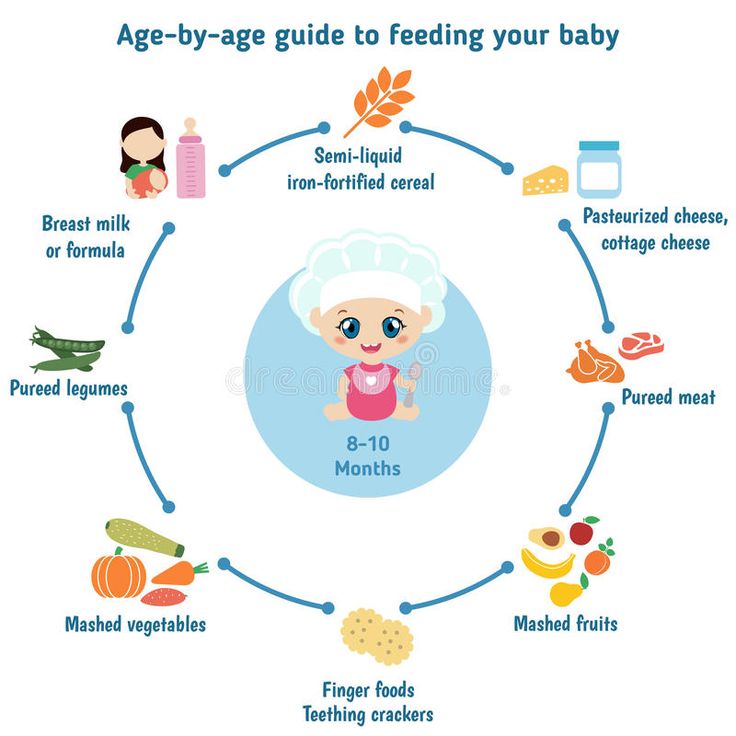 The number of daily feedings remains the same in the child, but the number of short-term attachments increases. There are active mid-morning feedings between 4 and 8 o'clock in the morning.
The number of daily feedings remains the same in the child, but the number of short-term attachments increases. There are active mid-morning feedings between 4 and 8 o'clock in the morning. - At ten or twelve months, the baby, if he is already walking, can sometimes breastfeed every time he comes to his mother, i.e. about every 15-30 minutes. Attachments around dreams and night sucking persist. Therefore, if a mother says that a child suckles once or twice a day, this means that there is no feeding at the request of the child. There are restrictions imposed by the mother, with which the baby has come to terms. He treats breast sucking like food, sucks on a pacifier or a finger to fall asleep or soothe, or falls asleep just like that, without calming down.
- At twelve months, the baby is applied in about the same way.
- At the age of one and a half years, there may already be one daytime nap, so there are fewer attachments associated with sleep. Preserved for morning sucking.
 The baby is very free with his mother's breasts. Sometimes it happens that he comes up to suck just for fun. For example, like this: he comes up, climbs on his knees, looks into his mother’s face, smiles, starts to swarm in his shirt, gets breasts, smiles at his breasts, sucks for 30 seconds and leaves.
The baby is very free with his mother's breasts. Sometimes it happens that he comes up to suck just for fun. For example, like this: he comes up, climbs on his knees, looks into his mother’s face, smiles, starts to swarm in his shirt, gets breasts, smiles at his breasts, sucks for 30 seconds and leaves.
As for the number of feedings per day when feeding a child on demand, their number is almost never less than 12. A newborn has 12 or more attachments, mostly they are all associated with dreams. And a child, say 1.5-2 years old, can also have about 12 attachments, only 3-4 are associated with sleep, and the rest are short-term attachments for various reasons. I suggest to all mothers reading this text - do not count the application, do not notice their duration. Breastfeed your baby as often as he asks, when you feel the need to.
Moms who don't think about breastfeeding without looking at the clock may get the impression that when breastfeeding on demand, the mother can do nothing but feed the baby. This is wrong. After the birth of a baby, a mother begins another life, she is called life with a baby. That's all. The child is with the mother, not the mother with the child! Feel the difference! You need to be able to organize your life in a different way, in the first months, of course, the help of loved ones is very necessary. In the tradition of many peoples, it was customary for the first 40 days after childbirth to remove a woman from any housework and household chores, she was engaged only in a child. In some nations, objects that the mother of a newborn touched were considered “unclean”, therefore, they preferred to protect the mother from the rest of the household, allocating her a separate “corner” of the house, where no one bothered her and she did not interfere with anyone. Among the Slavs, such a restrictive custom was called a six-week. By 1.5-2 months, the rhythm of daytime dreams begins to form, and the baby has a kind of “regime”, the mother becomes more free.
This is wrong. After the birth of a baby, a mother begins another life, she is called life with a baby. That's all. The child is with the mother, not the mother with the child! Feel the difference! You need to be able to organize your life in a different way, in the first months, of course, the help of loved ones is very necessary. In the tradition of many peoples, it was customary for the first 40 days after childbirth to remove a woman from any housework and household chores, she was engaged only in a child. In some nations, objects that the mother of a newborn touched were considered “unclean”, therefore, they preferred to protect the mother from the rest of the household, allocating her a separate “corner” of the house, where no one bothered her and she did not interfere with anyone. Among the Slavs, such a restrictive custom was called a six-week. By 1.5-2 months, the rhythm of daytime dreams begins to form, and the baby has a kind of “regime”, the mother becomes more free.
For a mother who can't imagine breastfeeding without looking back at the clock, and who is sure that the “right” baby is the baby lying quietly in her crib all the time, feeding on demand will be a complete hassle. It will be much easier for such a mother if she stops looking at the clock and ties the baby to herself with a large scarf or uses a patchwork holder (sling). It will become easier for her if she stops running between the nursery and the kitchen, but takes the baby with her to the kitchen and carries him around the house with her, doing housework, in a box, a cradle, a special chair, if she tries not to put him off often, and pick up as soon as possible, postponing the baby only in case of emergency and not for long.
It will be much easier for such a mother if she stops looking at the clock and ties the baby to herself with a large scarf or uses a patchwork holder (sling). It will become easier for her if she stops running between the nursery and the kitchen, but takes the baby with her to the kitchen and carries him around the house with her, doing housework, in a box, a cradle, a special chair, if she tries not to put him off often, and pick up as soon as possible, postponing the baby only in case of emergency and not for long.
Breastfeeding is not the same as house arrest. In the conditions of modern society, it is possible to organize the exit of a nursing mother to work from about 6 months of age of the baby. If necessary, you can start working from the age of 4 months, but, of course, it is better not every day of the week and not full time. It is the responsibility of a breastfeeding consultant to help a mother organize her return to work.
Sometimes, when I advise mothers on breastfeeding, I suggest that they forget for a second that they are already living in the 21st century. I propose to return, for example, to the cave and ask what they will do if the child woke up at night, how to calm him down? If you are walking through the forest and trying not to attract the attention of predators, how to make the baby silent? If the child is thirsty, what will you give him? What is the baby used to, for thousands of years of its existence? To the fact that he sleeps on his mother while she wanders through the forest with a digging stick in search of roots, and wakes up when mother stops. Since mom stopped, then there is time to wake up and suck. Therefore, even now the child sleeps well, tied to the mother with a patchwork holder, wakes up when the mother, having done a few household chores, sits in a chair to take care of the baby.
I propose to return, for example, to the cave and ask what they will do if the child woke up at night, how to calm him down? If you are walking through the forest and trying not to attract the attention of predators, how to make the baby silent? If the child is thirsty, what will you give him? What is the baby used to, for thousands of years of its existence? To the fact that he sleeps on his mother while she wanders through the forest with a digging stick in search of roots, and wakes up when mother stops. Since mom stopped, then there is time to wake up and suck. Therefore, even now the child sleeps well, tied to the mother with a patchwork holder, wakes up when the mother, having done a few household chores, sits in a chair to take care of the baby.
Some mother, reading about the cave, will be offended, saying that she is a civilized creature. But please think. Man, mother's breast and mother's milk have been created by evolution over millions of years. They are made for each other. Baby food has created progress and more recently. The skills of motherhood and breastfeeding have also been lost by our society quite recently. A person is not physiologically adapted to artificial feeding and a pacifier. The mother's breast will not produce enough milk at 6-7 feedings per day. Nature did not know, when creating man as a mammal, that the time would come when the need for breastfeeding would be satisfied by some kind of pacifiers and nipples.
Baby food has created progress and more recently. The skills of motherhood and breastfeeding have also been lost by our society quite recently. A person is not physiologically adapted to artificial feeding and a pacifier. The mother's breast will not produce enough milk at 6-7 feedings per day. Nature did not know, when creating man as a mammal, that the time would come when the need for breastfeeding would be satisfied by some kind of pacifiers and nipples.
Changes that occur during the formation of the personality of a child who did not have full contact with the mother during prolonged breastfeeding are noted by modern research by psychologists and sociologists. These are changes with a minus sign. It would be better if they were not, these changes.
Breastfeeding is important not only for the baby, it is also important for the mother. During on-demand feeding, the woman's feelings change, a stronger attachment to the baby is formed, the woman becomes more sensitive to the needs of the baby.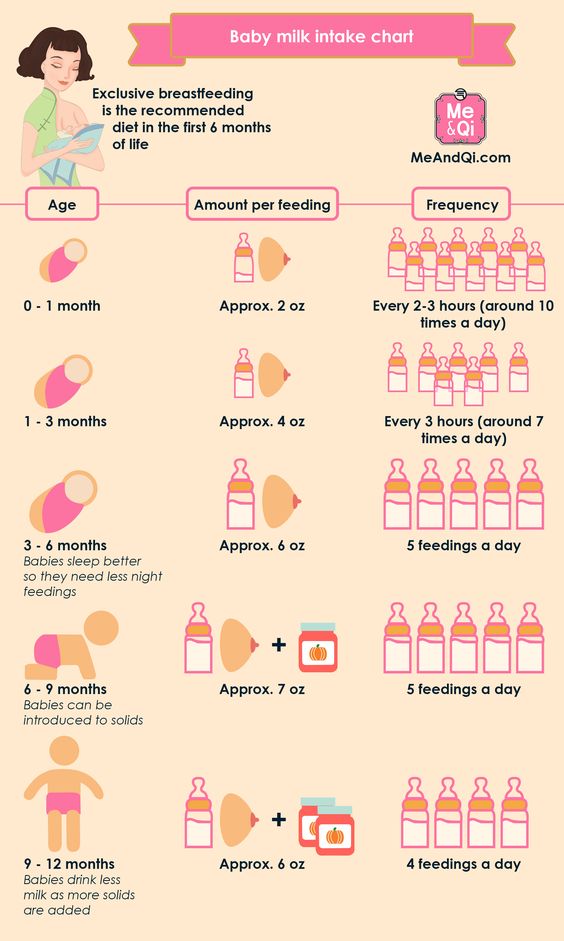 Deeper affection and understanding are not only preserved in infancy. They persist for life. For clarity, imagine what happens to a woman’s feelings if she tries to “withstand” a child, endures his crying, anxiety. What happens to a woman if she uses the recommendation from one very popular parenting book: "Go to the child if he cries for more than 15 minutes"? Speaking in abstract terms, humanity is interested in reviving the practice of breastfeeding. The revival of this practice is impossible without mothers realizing the true reasons for the child's need for attachment to the breast.
Deeper affection and understanding are not only preserved in infancy. They persist for life. For clarity, imagine what happens to a woman’s feelings if she tries to “withstand” a child, endures his crying, anxiety. What happens to a woman if she uses the recommendation from one very popular parenting book: "Go to the child if he cries for more than 15 minutes"? Speaking in abstract terms, humanity is interested in reviving the practice of breastfeeding. The revival of this practice is impossible without mothers realizing the true reasons for the child's need for attachment to the breast.
Lilia Kazakova, pediatrician,
head of the breastfeeding and childcare consultant service
: sometimes it is filled with the aroma of spring herbs, sometimes sweet like honey, sometimes light like dew, sometimes enveloping like white clouds. How many times it healed me and I became strong again, or wrapped me in a sweet slumber when I was very tired. At your chest, I heard the singing of a lark high in the sky, and the whisper of leaves in a birch grove, and autumn rain outside the window, and the chime of waxwings on a winter day.

Even after many years I will remember it, we will remember it...
E. Ibragimova
Published in the special issue of the magazine "Liza.My child" special issue 01/2016
Many mothers, expecting their first baby, seriously think about how childbirth will take place, and less often they think about how they will feed the baby. Meanwhile, childbirth is a very short period of time, and the rest of the time of life with the baby will be devoted to building relationships with him through breastfeeding.
Some mothers-to-be are hesitant to breastfeed at all.
Let's look at their assumptions first:
- Does breastfeeding ruin breast shape?
Breast shape changes during pregnancy. On the contrary, when feeding for more than a year and smooth weaning, the breast acquires an almost “pre-pregnant” shape. According to studies, smoking has a stronger effect on the shape of the breast than feeding.
- Will it be impossible to leave the child?
The first 3 months are possible short (1-1.5 hours) separation from the child, from 3 months absence can be longer, after 9months, the mother can go to work full-time, leaving the baby with expressed milk.
- If the mother is nervous or very tired, does the milk “burn out” or become bad for the baby?
There are no conditions in the mammary gland for "burning out" of milk. When breastfeeding, endorphins are released into the blood of a woman, and HB helps her to endure stress more easily and is the best prevention of depression. Yes, and the child himself calms down at the breast, even if before that he sees the unusual behavior of his mother.
- Is formula practically the same as breast milk?
To give women such a doubt, manufacturers of infant formula have tried hard, investing millions of dollars in advertising and bribes.
Let's look at a few differences between breastfeeding and formula feeding:
|
| GW | Blend |
| Economy | free | about 100 tr. in the first year of a child's life. If hypoallergenic mixtures are required, then about 240 tr. |
| Number of substances | over 700! | 30- 50 |
| Stem cells | yes | no |
| Antibodies against disease | yes | no |
| Growth factors for maturation of the intestines | enough | little |
| Effect of | normal maturation of the gastrointestinal tract, normal development of the immune system | constipation, diarrhea, increased risk of many diseases: allergies, gastrointestinal problems, various infections, diabetes, etc. |
| Proteins | easily absorbed whey
| hard to digest casein clots
|
| Change in composition | adapts to the needs of the baby (changes depending on the season, time of day, age of the baby, etc.) | composition is the same for all children |
| Vitamins and minerals | easily digestible | low absorption |
| Availability | no need to cook | it is necessary to go to shops, sterilize the bottle, dilute the mixture with water, etc. |
| Excess substances | no | cases of salmonella infection, radioactive particles, etc. |
| Emotional connection between mother and child | strong | weak |
And the list of differences goes on.
Imagine, can a baby bottle with formula replace the happy moments at the mother's breast?
With the right information and help, almost any woman can successfully and sustainably breastfeed. And you can!
What information can help you?
First , immediately after delivery (before measurements) skin-to-skin contact between the newborn and the mother (a method that involves placing the naked child on the mother’s abdomen or chest), the child must be dried, covered with a dry diaper, contact duration - at least 40 minutes, optimally 2 hours or more. (This right of mother and child is also enshrined in the Methodological Letter of the Ministry of Health and Social Development of the Russian Federation dated July 13, 2011 N 15-4 / 10 / 2-6796 "On the organization of the work of the obstetric service in the context of the introduction of modern perinatal technologies").
Why is this important:
a) At the same time, the baby's body is colonized by the same bacteria that live on the mother's body. This, in combination with HB, is considered an important prevention of allergic diseases.
b) If a newborn is separated from his mother immediately after birth, he becomes vulnerable to aggressive hospital flora, the risk of nosocomial infections increases dramatically.
c) This calms the baby and mother, because they both experience severe stress in childbirth.
d) The baby is more likely to be able to breastfeed correctly (especially if the birth was completed without medication).
Second , breastfeed within the first hour after delivery. Don't panic if the baby doesn't take the breast right away. Children should eat when they show they are ready, and if the child is in close contact with the mother, she will notice this readiness. The recommended duration of application is at least 20 minutes from each breast.
The baby's first food should be colostrum. Colostrum is the secret of the mammary glands, which is produced during pregnancy and the first 3-5 days after childbirth (before milk arrives). It is a saturated thick liquid from light yellow to orange color. Do not be afraid that there is not enough colostrum. Colostrum is very concentrated, so the baby needs just drops.
Why it's important:
A) Colostrum contains several times more protein than mature milk, especially immunoglobulin A. Immunoglobulins are responsible for protecting the baby from infections and allergens, thanks to special mechanisms they are quickly absorbed in the baby's stomach and intestines.
B) It has laxative properties to help the baby quickly get rid of the original stool - meconium, and also reduces the risk of physiological jaundice in the baby.
C) The mother triggers the oxytocin reflex, which contributes to uterine contraction and faster recovery after childbirth.
Thirdly, the correct position of the baby at the breast and the correct attachment of to the breast. Let's dwell on the key points.
For example, you feed while seated. How to hold a baby:
a) The child's body and head are on the same line.
b) The baby's belly should be turned towards the mother's belly and touch it.
c) The WHOLE body of the child must be supported.
The baby is brought to the breast with the NOSE to the nipple so that it is necessary to reach for the breast. When he opens his mouth wide, we press the baby to ourselves.
If it is not possible to attach the baby well, gently insert the little finger into the corner of the mouth and open the gums, remove the breast.
What does proper attachment look like? The baby's mouth is open wide; lips turned out; his chin touches his mother's breasts; areola capture radius is 2-3 cm from the base of the nipple; except for swallowing, sniffing and even breathing, no other sounds are heard (smacking, etc. ); mom is not in pain.
); mom is not in pain.
There are many positions for feeding - sitting, lying down, close at hand, relaxed feeding, etc.
Nuance: good breast sucking is affected by the frenum under the tongue of the baby, ask the pediatrician at the maternity hospital to check it. If it turns out to be short, it is better to cut it immediately.
Fourth, frequent breastfeeding . The term “on demand” is commonly used, which confuses many moms. Many people think that a baby "demands" when it cries. At the same time, crying is the last thing a hungry child decides to do.
Signs of readiness to suckle in a newborn :
The child's muscles tighten, for example, he clenched his fists and flexed his arms at the elbows.
The child rolls, twists and arches his back.
The child makes different sounds.
The child draws his hands to his mouth (even if his eyes are closed, he can suck his own hand).
If the child's hand is next to the face, he turns towards the hand, pokes, opens his mouth.
A newborn in the first 3 months of life may want to kiss 15-25 times a day. After all, his stomach is very small (on the 1st day after birth - 5-7 ml, on the 3rd day - 22-27 ml, on the 7th day - 45-60 ml) and breast milk is quickly absorbed. In addition to receiving nourishment, the child also finds comfort in his mother's breast. Therefore, it is not recommended to feed the baby "according to the regime" - for example, once every 3 hours or to limit his time at the breast - for example, to feed no more than 15 minutes. Night feedings are crucial for successful lactation - thanks to them, the level of prolactin is maintained at the required level.
Why frequent breastfeeding is important:
a) The number of prolactin receptors in the breast increases, which contributes to sufficient milk production in the future.
b) Promotes a more relaxed flow of milk, without pronounced symptoms of engorgement.
c) When feeding “according to the regimen”, there is a high risk that the child will be offended by the mother (after all, they do not immediately respond to his needs) and will behave restlessly at the breast.
Fifth, it is not recommended to give pacifiers to the child.
Why it's important:
a) Soothers artificially delay feeding time, resulting in poor weight gain and decreased milk production.
b) The child finds solace not at the mother's breast, but in a silicone object and may refuse the breast.
c) It spoils the grip of the breast, which leads to cracks, lactostasis.
Sixth, if you need to supplement with expressed milk and/or formula, then avoid the use of bottles.
Why is this important:
A) The baby gets used to a strong and constant flow of milk from the bottle and begins to behave restlessly at the breast, “lazy” to suck.
B) When sucking a bottle and a breast, different muscle groups are used, so the grip on the breast often deteriorates, the child sucks milk poorly, gains weight worse.
Seventh, the joint sleep of mother and child.
Sleeping with your baby is perfectly normal. A child should not be spoiled with attention or held too much in his arms. The more children are held in their arms, the more attention is paid to them, the better they grow. The presence of the mother, her smell, constantly encourages him to suckle the breast more often, which means sucking out more milk.
Western parents are advised to leave the child to "shout out" at bedtime in order to raise an independent, lonely and self-soothing child. However, modern research shows that in this case, the child's brain is irreparably damaged.
Safe sleep:
- The child should sleep on a clean and hard surface.
- Avoid sleeping with your baby if you are overly tired.
- Do not leave your baby unattended in an adult bed.
- In cold weather, cover yourself with several layers of thin bed linen instead of one thick layer.
- Pets must not be in bed
- No one should smoke in the room where the baby sleeps.
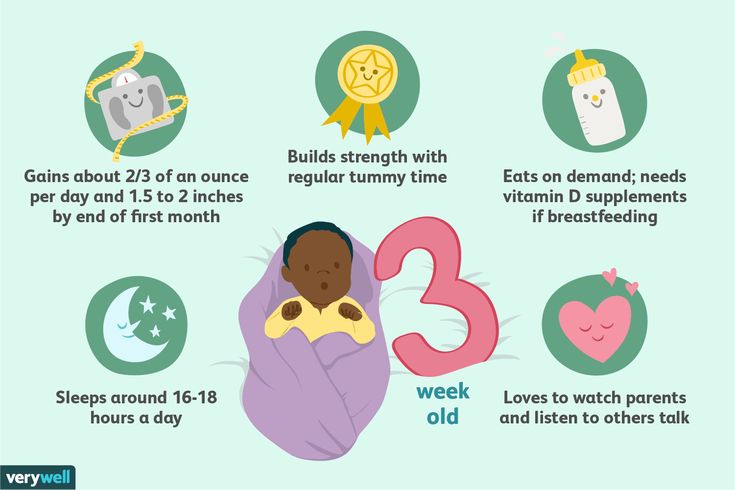
Now consider some common cases:
- Mother's Rh negative or blood type incompatibility is not a contraindication to breastfeeding. Rh-conflict, blood type conflict or hemolytic disease of the newborn is not a contraindication. Rh antibodies are destroyed in the gastric juice of the newborn. Studies also show that in children with hemolytic disease, HB does not increase the breakdown of erythrocytes, red blood cells.
- The administration of anti-Rh immunoglobulin to prevent Rh conflicts in subsequent pregnancies in an Rh-negative mother is not a contraindication to breastfeeding. Anti-Rhesus immunoglobulin almost does not penetrate into breast milk. Most immunoglobulins are destroyed in the gastric juice of the newborn.
- Is it possible to breastfeed with jaundice?
Even with severe physiological jaundice in children in the first days of life, it is impossible to refuse breastfeeding. Early attachment of the baby to the breast and frequent feedings are an important factor in the prevention of jaundice, since colostrum, having a laxative effect, leads to a faster discharge of meconium (original feces). With insufficient nutrition of a newborn baby, jaundice may be more intense and prolonged due to the thickening of bile. (source - NATIONAL PROGRAM OF OPTIMIZATION OF FEEDING OF CHILDREN OF THE FIRST YEAR OF LIFE IN THE RUSSIAN FEDERATION, p.17).
With insufficient nutrition of a newborn baby, jaundice may be more intense and prolonged due to the thickening of bile. (source - NATIONAL PROGRAM OF OPTIMIZATION OF FEEDING OF CHILDREN OF THE FIRST YEAR OF LIFE IN THE RUSSIAN FEDERATION, p.17).
It is absolutely pointless to give the child water, glucose, activated charcoal, smectite, etc. in such a situation. - from this, the activity of liver enzymes, the function of which is reduced, will not increase. In some cases, it may be necessary to carry out phototherapy with special lamps, which can usually be rented from the hospital home.
- What to do if you are separated from your child?
It is recommended to express at least eight times a day. Whether you can pump something or not, breast stimulation is important to maintain and increase your milk supply.
If there is no joint stay in the maternity hospital, or if the baby was taken to the children's department for some medical reasons - do not hesitate to visit him and feed him there! If your and his condition allows, try to feed the baby only colostrum and then breast milk.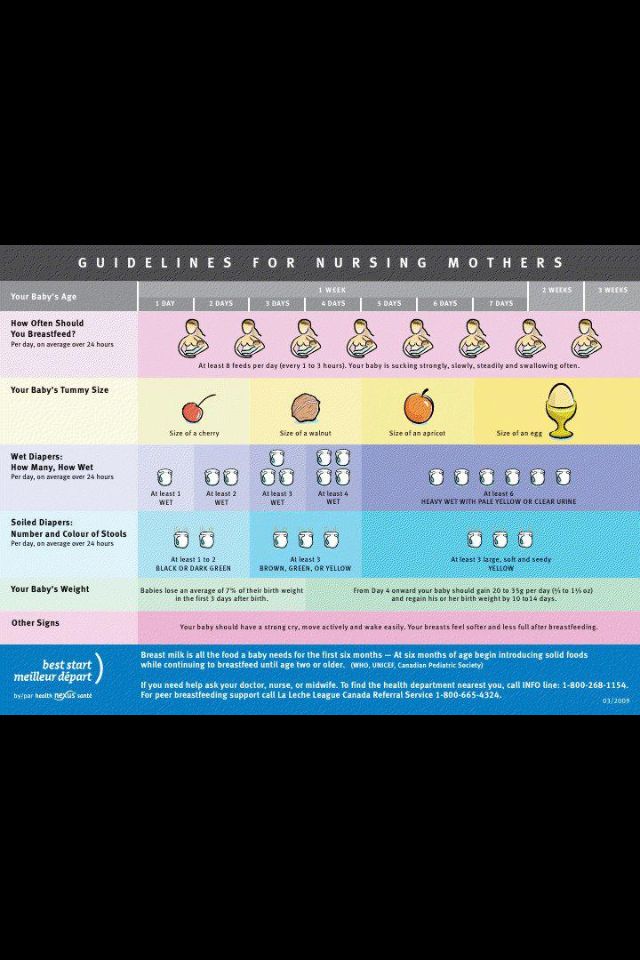
Try not to give supplements from a bottle, but from a spoon, pipette or syringe without a needle.
"Arrival" of milk.
Milk comes on 3-4 days after birth, less often - on 5-7. Your chest becomes hot, heavy, tight. If the mother rarely put the baby to the breast before, then engorgement may occur. At the same time, remember that you can do without pain and rough straining. Act according to the scheme: heat - light massage - removal of swelling from the areola - decant a little - attach the child - cold compress.
"Hard" straining, which is often used in the hospital, leads to severe swelling and worsening of the situation. Alcohol compresses, Vishnevsky ointment, etc. are not recommended.
How to remove swelling from the areola? Use the Pressure Softening technique introduced by international consultant Jean Kotterman.
It is necessary to evenly and gently press on the areola towards the chest and hold the pressure for at least a full minute (up to 2-3 minutes).
How to express properly? Fingers are placed on the border of the areola and white skin. First, the fingers are pressed in the direction of the chest: you seem to grab the milk-filled ducts that lie under the areola, and only then roll over them with your fingers. Important: the fingers do not fidget over the skin, they stand in one place on it.
How do you know if your baby is getting enough milk?
Newborns lose up to 6-10% of their birth weight in the first two days of their lives. This is a physiological norm. Most children regain their weight or begin to put on weight by 5-7 days of life.
- Wet diaper test .
Urination rate (per day) for a child up to 10 days old = number of days + 1.
That is, for example, a 2-day-old baby who has enough milk pees 3 times a day.
Babies over 10 days of age should write 12 or more times a day.
These calculations are correct if there is no water addition and no drips.
- Weight set . The rate of weight gain for babies in the first 6 months of life is from 500 to 2000 g per month.
The set is not calculated from birth weight, but from the minimum (usually this is discharge weight). If the weight gain is less than 150g per week, we advise you to contact the AKEV specialists and the pediatrician.
- An infant should have at least 3-4 bowel movements per day (up to about 3-6 weeks). Then the chair is reduced - up to 1 time per day or less.
All other signs - baby crying, little pumping from the breast, no milk leakage, etc. - are not reliable signs of milk sufficiency / lack of milk .
Breastfeeding mother's lifestyle:
- Care: it is recommended to wash breasts 1-2 times a day while taking a shared shower (just with water, no soap).
- Diet: you should not sit on a "dry ration", the menu should be varied and healthy (without the use of chemical additives), eat according to your appetite.





